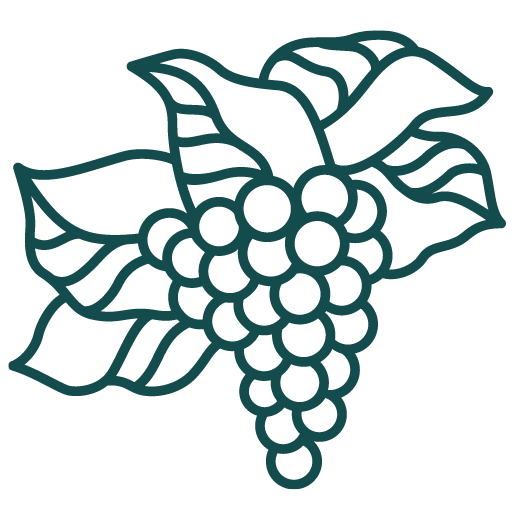
Wine Culture Magazine

The entrance to Château L’Hospitalet Wine Resort
If there’s one name synonymous with Languedoc, it’s surely that of Gérard Bertrand. Arguably no one is a more potent ambassador than the dashing French rugby star who took the reins of Château Villemajou, his family’s Corbières estate, after his father Georges’ untimely passing in 1987.
Ever since, for almost 40 years, Bertrand has been working tirelessly to put Languedoc on the world wine map. Increasingly, his efforts are paying off.
So much has changed from the time when Languedoc-Roussillon accounted for some 40 percent of all French wine made. The senior Bertrand was among the earliest to shun the production of bulk wine sold as French vin de table. Choosing instead to champion quality over quantity, he became the first Languedoc vintner to opt for barrels over the giant tanks that for decades had been the foundation of the area’s ubiquitous co-operatives.
When Narbonne-born Gérard Bertrand became Château Villemajou’s third-generation winemaker at just 22 years old, he somehow managed to juggle his blossoming rugby career (in which he played some 40 games per year) with the demands of running a successful winery. In 1992 he formed the Gérard Bertrand wine company; two years later, he retired from rugby and turned his significant skills wholly to winemaking and working to raise up Languedoc as a renowned wine region.
Today Gérard Bertrand owns or manages 17 estates comprising some 930 hectares of vineyard, almost all of which are fully farmed biodynamically or organically. Remarkably, it’s now the largest biodynamic winemaker in the world.

Château L’Hospitalet estate director Guillaume Barraud.
The brand’s crown jewel, Château L’Hospitalet Wine Resort, is emblematic of Bertrand’s efforts on many levels, including the way in which he’s setting the pace for the region’s burgeoning wine tourism. Bertrand purchased the 1,000-hectare property in 2002, very much laying the groundwork for his long-term vision.
Housed in a beautifully restored 16th-century building, the five-star luxury resort and conference centre (with its Michelin Green Star restaurant) has emerged as one of Languedoc’s most sought-after wine destinations.
Walk into L’Hospitalet and you’re immediately struck not only by the beauty and peacefulness of the surroundings, but also by the innate wine culture underpinned by passionate professionalism that prevails throughout. Evident everywhere is the energy that personifies the Bertrand style, blending unswerving optimism with an unmistakeable, polished air of “savoir faire.”

L’Hospitalet Beach is a private outpost at Gruissan Beach, right on the ocean.
Just a short drive from historic Narbonne, the resort is nestled in vineyards on the borders of the Massif de la Clape. The latter is a former island made up of alluvial deposits built up over six centuries, noted for its unique garrigue (especially boxwood, wild thyme, sage and fennel) and clay-covered limestone soils that yield distinctive minerality. Appropriately, in the ancient Occitan language, “La Clape” means, literally, “the pile of pebbles.”
Formally approved as an appellation in 2015, La Clape also benefits from the meeting of sunny, moisture-bearing Mediterranean winds with drier influences from the nearby Pyrenees mountains, a natural boundary between France and Spain.
The resort features everything from luxurious accommodations, stunning views and elevated Mediterranean-themed dining to wine tastings, spa services, heated outdoor pools surrounded by vineyards, jazz evenings and more. It also includes access to L’Hospitalet Beach, a laidback private outpost at Gruissan Beach, right on the ocean, just five kilometres away.

Gérard Bertrand is the largest biodynamic winemaker in the world.
Gérard Bertrand’s original vision for biodynamic viticulture dates back over two decades, following successful small-scale trials at his Cigalus estate concluded in 2003. One of the earlier biodynamic conversions, L’Hospitalet is also a fitting showcase for Bertrand’s role as a biodynamic champion. It, too, has helped fuel Languedoc’s transformation.
Yet L’Hospitalet is far more than just a pretty place. In 2019, its flagship Château L’Hospitalet Grand Vin 2017 (a silken, superbly structured, organic- and biodynamic-certified La Clape blend of Syrah, Grenache and Mourvèdre) was voted Best Red Wine in the World at London’s prestigious International Wine Challenge 2019.
For Bertrand, along with his efforts in wine tourism, it’s all part of his never-ending goal. Or, as he explained to Forbes magazine, “My ambition at Château L’Hospitalet is to be the most iconic wine resort in the world, committed to excellence at every level, to bring our visitors the best experience possible in terms of hospitality, well-being, wine, food and the arts.”

Vitis is is an indispensable seasonal guide for vintners, sommeliers and weekend imbibers alike that is dedicated to British Columbia’s rapidly evolving wine culture.

Vitis is is an indispensable seasonal guide for vintners, sommeliers and weekend imbibers alike that is dedicated to British Columbia’s rapidly evolving wine culture.
Copyright © 2025 - All Rights Reserved Vitis Magazine